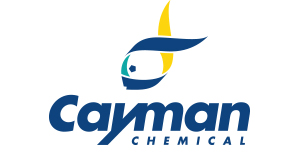Alborixin, CAS 57760-36-8
Alborixin, CAS 57760-36-8
Artikelnummer
CAY40933-1
Verpackungseinheit
1 mg
Hersteller
Cayman Chemical
Verfügbarkeit:
wird geladen...
Preis wird geladen...
Formulation: A solid
Formal Name: (αR,2S,3S,5R,6S)-6-[(2R,3S)-3-[(2R,5S,6R)-6-[[(2R,3S,5R,6R)-6-[(R)-[(2S,2′R,3′R,5S,5′S)-5′-[(2R,5R,6S)-6-ethyltetrahydro-5-hydroxy-5-methyl-2H-pyran-2-yl]octahydro-2′-hydroxy-2,3′,5′-trimethyl[2,2′-bifuran]-5-yl]hydroxymethyl]tetrahydro-6-hydroxy-3,5-dimethyl-2H-pyran-2-yl]methyl]tetrahydro-6-hydroxy-5-methyl-2H-pyran-2-yl]-2-hydroxybutyl]tetrahydro-α,3,5-trimethyl-2H-pyran-2-acetic acid
Purity: ≥70%
Formula Markup: C48H84O14
Formula Weight: 885,2
Shelf life (days): 1460
CAS Number: 57760-36-8
Notes: Alborixin is an ionophore originally isolated from S. albus that has diverse biological activities.{72419,72420,72421,32118} It is active against B. cereus, B. megaterium, S. lactis, S. aureus, and C. xerosis (MIC50s = 0.4, 50s = 3.2 to 15.4 µM).{72420} It induces apoptosis, decreases the mitochondrial membrane potential, and increases the levels of reactive oxygen species (ROS) in HCT116 colon cancer cells when used at a concentration of 5 µM. Alborixin (1 mg/kg) increases heart rate, right ventricular contractile force, systolic and diastolic arterial blood pressure, and plasma levels of glucose in the coronary sinus and hepatic veins, as well as decreases the QT interval and plasma levels of potassium and sodium, but not calcium, in the coronary sinus and hepatic, renal, and deep femoral veins in normotensive dogs.{72421} It reduces the number of C. parvum oocytes in C. parvum-infected mice when administered at doses of 1.5 or 2.5 mg/kg.{32118} Alborixin is toxic to mice (LD50 = 150 mg/kg).{72419}
Formal Name: (αR,2S,3S,5R,6S)-6-[(2R,3S)-3-[(2R,5S,6R)-6-[[(2R,3S,5R,6R)-6-[(R)-[(2S,2′R,3′R,5S,5′S)-5′-[(2R,5R,6S)-6-ethyltetrahydro-5-hydroxy-5-methyl-2H-pyran-2-yl]octahydro-2′-hydroxy-2,3′,5′-trimethyl[2,2′-bifuran]-5-yl]hydroxymethyl]tetrahydro-6-hydroxy-3,5-dimethyl-2H-pyran-2-yl]methyl]tetrahydro-6-hydroxy-5-methyl-2H-pyran-2-yl]-2-hydroxybutyl]tetrahydro-α,3,5-trimethyl-2H-pyran-2-acetic acid
Purity: ≥70%
Formula Markup: C48H84O14
Formula Weight: 885,2
Shelf life (days): 1460
CAS Number: 57760-36-8
Notes: Alborixin is an ionophore originally isolated from S. albus that has diverse biological activities.{72419,72420,72421,32118} It is active against B. cereus, B. megaterium, S. lactis, S. aureus, and C. xerosis (MIC50s = 0.4, 50s = 3.2 to 15.4 µM).{72420} It induces apoptosis, decreases the mitochondrial membrane potential, and increases the levels of reactive oxygen species (ROS) in HCT116 colon cancer cells when used at a concentration of 5 µM. Alborixin (1 mg/kg) increases heart rate, right ventricular contractile force, systolic and diastolic arterial blood pressure, and plasma levels of glucose in the coronary sinus and hepatic veins, as well as decreases the QT interval and plasma levels of potassium and sodium, but not calcium, in the coronary sinus and hepatic, renal, and deep femoral veins in normotensive dogs.{72421} It reduces the number of C. parvum oocytes in C. parvum-infected mice when administered at doses of 1.5 or 2.5 mg/kg.{32118} Alborixin is toxic to mice (LD50 = 150 mg/kg).{72419}

 English
English










